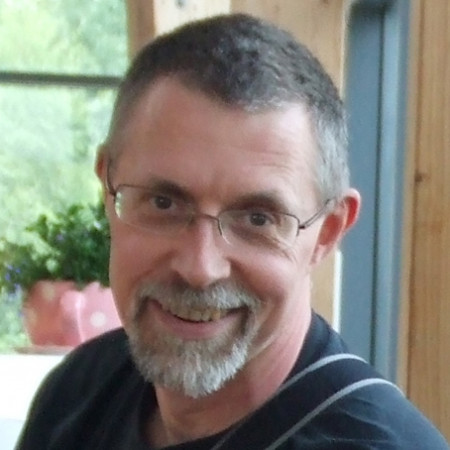
Dr Jonathan Golding
Senior Lecturer In Health Sciences
School of Life, Health & Chemical Sciences
Biography
Professional biography
I did my PhD research at King's College, London.
Post-doctoral positions at King's College London, Guy's Hospital, MRC National Institute for Medical Research, MRC Clinical Sciences Centre (Imperial).
MRC Collaborative Career Development Fellowship in Stem Cell Research.
Research interests
My lab works mainly on improving the effectiveness of the anti-cancer treatments photodynamic therapy (PDT) and radiotherapy. A full list of my research publications can be found at ORCID or Researchgate
I am the convenor of the OU Cancer Research Group.
A two-year clinical trial of our new combination PDT, in collaboration with the University of Cambridge, began in October 2013. On the basis of the excellent trial results, this has been adopted as a standard treatment option by Cambridge Veterinary School.
2020: £16k OU funding to run a larger equine clinical trial, with a view to making the combination PDT technique a standard treatment option throughout the UK.
PI. Clinical trial of combination photodynamic therapy for equine sarcoids . European Society for Veterinary Dermatology (2013-2015). €20k
PI. Mechanisms of nanoparticle toxicity in normal and tumour cells. Industrial funding (2015-2018). £68k
Co-I. Targeting radiotherapy with DNA binding metal complexes and their attachment to gold nanoparticles. Royal Society of Chemistry (2015). £5k
Co-I. EU Framework 7 grant PEOPLE-2013-ITN ARGENT- Advanced Radiotherapy, Generated by Exploiting Nanoprocesses and Technologies (2014-2017). £3.65M
Patent: Nanoparticles and their uses in medicine. GB1423049.4 (23/12/2014)
Teaching interests
My main teaching interest is in developing global online life sciences education.
SK297 production and presentation module chair (Infection, immunity and public health)
SK320 production and presentation module chair (Infectious disease and public health)
S390 module chair (STEM capstone project module)
Module author for T366 (Engineering on the Nanoscale)
External collaborations
I collaborate with:
- Clinicians at Milton Keynes University Hospital and Northampton Hospital.
- Radiographers at GenesisCare, Milton Keynes.
- Veterinary surgeons at the University of Cambridge and Nottingham Trent University
- Pharmaceutical companies (Midatech Pharma, Glaxo Smith Kline).
- New University of Lisbon (RaBBiT doctoral training program)
International links
As a member of the Affiliated Research Centre Management Group, I work to ensure the excellent and equivalent provision of PhD student training across the world in our network of OU Affiliated Research Centres (ARCs) and to foster research relationships between to OU and ARCs.
Projects
Development of H19-targeting antisense oligonucleotides for DIPG therapy
Diffuse intrinsic pontine glioma (DIPG) is the most frequent paediatric brainstem malignancy, and it is invariably associated with a dire prognosis [1]. DIPG is characterized by diffuse infiltrative growth patterns and by an invasive phenotype that underpins its inadequate response to both pharmacological and surgical treatments. DIPG response to radio- or chemo- and targeted therapies is short lived at best. Hence, it is of paramount importance to identify new targets for the development of effective therapies. The genomic landscape of DIPG has been recently described as an heterogenous collection of mutations and copy number variations in protein-coding genes. The most frequent mutation occurs at histone H3 lysine 27 (H3K27M) resulting in widespread epigenetic deregulation. Despite intensive research, no effective protein-targeting therapy has been developed for DIPG. Long noncoding RNAs (lncRNAs) are non-protein coding transcripts longer than 200bp. For several decades, lncRNAs have been considered non-functional transcriptional noise. Recent deep sequencing data have revealed that lncRNAs represent a vast and largely uncharted region of the human transcriptome (more than 50,000 unique loci, 100nMol), broad CNS distribution and rapid cellular uptake. Antisense oligonucleotides (ASOs) are clinically approved molecules that target and silence specific RNA sequences. Our group has shown that antisense ASOs can efficiently target oncogenic lncRNAs. In this project, we will to develop lncRNA-targeting ASOs to stop DIPG proliferation, with the final goal of developing personalised therapies for this incurable disease
Mechanisms of nanoparticle toxicity
This is a matched funded PhD student project between LHCS and Midatech. This project will discover why certain nanoparticles are selectively toxic to different cell types.
Improving the efficiency and targeting of radiosensitisers
New University of Lisbon have a doctoral training program called RaBBiT, whereby the student does research towards their PhD in a host lab (in this case at the OU). The student will be a visitor to the OU for 2 years. The Sir John Mason Academic Trust will meet the cost of the project specific consumables and expenses.
Publications
Book Chapter
New Research in Ionizing Radiation and Nanoparticles: The ARGENT Project (2016)
Journal Article
Marine Natural Products with Activities against Prostate Cancer: Recent Discoveries (2023)
Photodynamic therapy and diagnosis: Principles and comparative aspects (2018)
Glycolysis inhibition improves photodynamic therapy response rates for equine sarcoids (2017)
Cancer-selective, single agent chemoradiosensitising gold nanoparticles (2017)
Gold nanoparticles for cancer radiotherapy: a review (2016)
Engineered neural tissue for peripheral nerve repair (2013)
Regulation of PP2A activity by Mid1 controls cranial neural crest speed and gangliogenesis (2012)
A versatile 3D culture model facilitates monitoring of astrocytes undergoing reactive gliosis (2009)
Developing a 3D culture model of CNS myelination (2009)
Astrocyte alignment increases neurite outgrowth in a 3D cell culture model (2009)
Mouse myotomes pairs exhibit left-right asymmetric expression of MLC3F and α-skeletal actin (2004)
Muscle satellite cells adopt divergent fates: a mechanism for self-renewal? (2004)
Presentation / Conference
Cancer-selective toxicity of gold nanoparticles: effects of synthesis time and charge (2016)
Selective cancer cell toxicity and radiosensitization with gold nanoparticles (2015)
Aligned Schwann cells within 3D tissue-like gels provide guidance to regenerating neurites (2011)
Aligned cellular and acellular collagen guidance substrates for peripheral nerve repair (2011)
Plastic compression of aligned cellular collagen gels for nervous system repair (2010)
Glucosamine improves the efficiency of photodynamic therapy (PDT) (2008)
Midline1 and the development of the cranial peripheral nervous system (2008)
An in vivo model of epidermal neural crest cell migration after implantation into the brain (2007)
Maintaining the regenerative compartment of adult skeletal muscle (2005)
Not all activated satellite cell progeny commit to differentiation (2003)